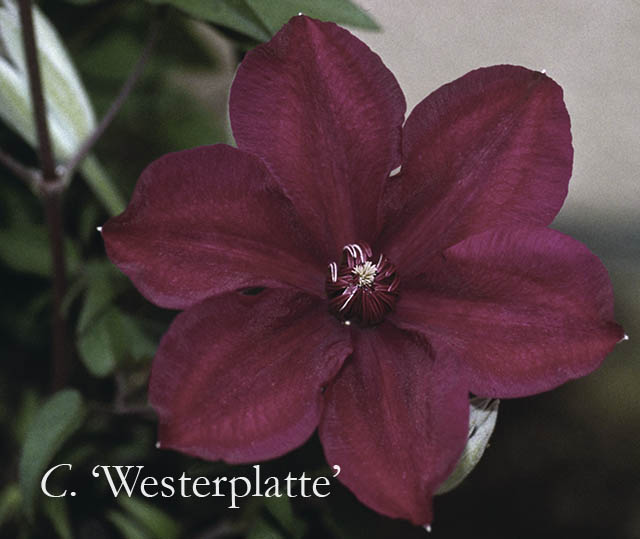I can still remember when I first saw Clematis ‘Vyvyan Pennell’. It was 1994 and she was featured in the book, Growing Clematis by Dr. John Howells. I was completely captivated by the photograph which showed two breathtaking examples of this clematis that has the ability to double. In 1996, I mail-ordered a C. ‘Vyvyan Pennell’ but, sadly, it died a week after its arrival. I was undaunted and my desire to raise a Vyvyane would not be extinguished and ultimately, two years later, I was able to order one from Canada. This time the C. ‘Vyvyan Pennell’ that arrived was a nice healthy plant with two big, fat buds on it. When the first bud opened I was soooo thrilled because I was finally the proud owner of this purple frilly fantasy. Ultimately, and what I didn’t realize at the time, these two double flowers would be the very last doubles that this plant would ever produce for me in my USDA Zone 10a garden. The sequels would just be singles. Boy was I disappointed!
The good news, despite my doubling setback with C. ‘Vyvyan Pennell’, is that as I journeyed along in the early stages of my clematis odyssey I purchased the fabulous double C. ‘Duchess of Edinburgh’. To my delight it continually produces beautiful double rosettes year after year. I still love it as much today as when I first discovered it and can honestly say that if you haven’t grown this beauty it should be on your must-have list.
What stopped my C. ‘Vyvyan Pennell’ from subsequently producing double flowers while my C. ‘Duchess of Edinburgh’ was able to keep on blessing me with her doubles? The answer is that certain doubles act differently, meaning some double every crop and some will only double in spring and later give you only singles. Ultimately, this behavior is dictated by the USDA Zone in which you live. Unless global warming has an impact on the situation, residents of USDA Zones 4-9 need not worry. However, if you live (as I do) in the warmer locales of USDA Zones 10-13, you most likely will never receive the required hours of winter chill necessary each year to produce double flowers on these specific double cultivars. So, what I’ve concluded is that due to our warm weather and the lack of winter chill, these cultivars must feel like they are stuck in the fall flowering mode. The result is that they are capable of producing only single flowers season after season.
The moral of my story is that no matter where you live, if you want to “see double”, look for those clematis that are capable of always creating doubles throughout the growing season, not ones that double once and then produce only “single” flowers in the fall. So, if you desire sweet, pom-pom type clematis and want to be assured of acquiring countless double delights, make sure you choose any or all of the following double clematis: C. ‘Belle of Woking’, C. ‘Duchess of Edinburgh’, C. ‘Kiri te Kanawa’, C. ‘Multi Blue’.
